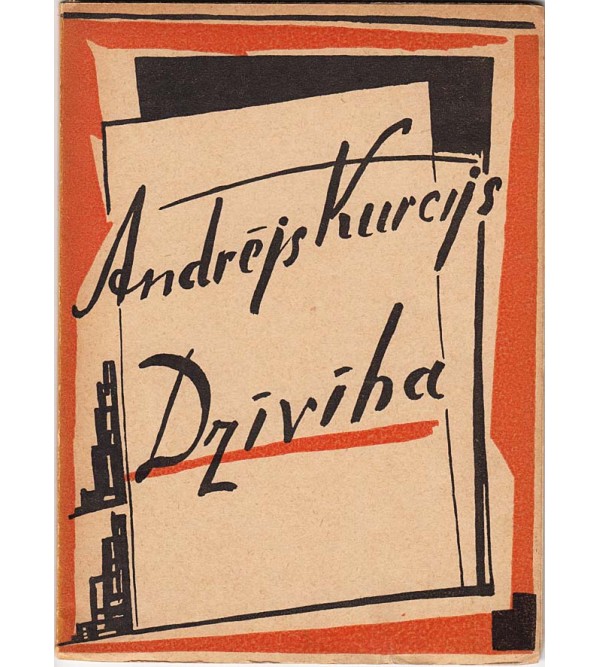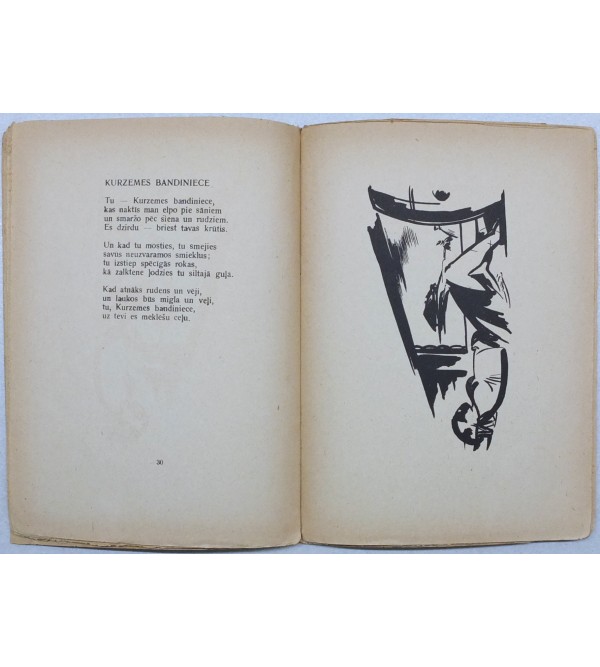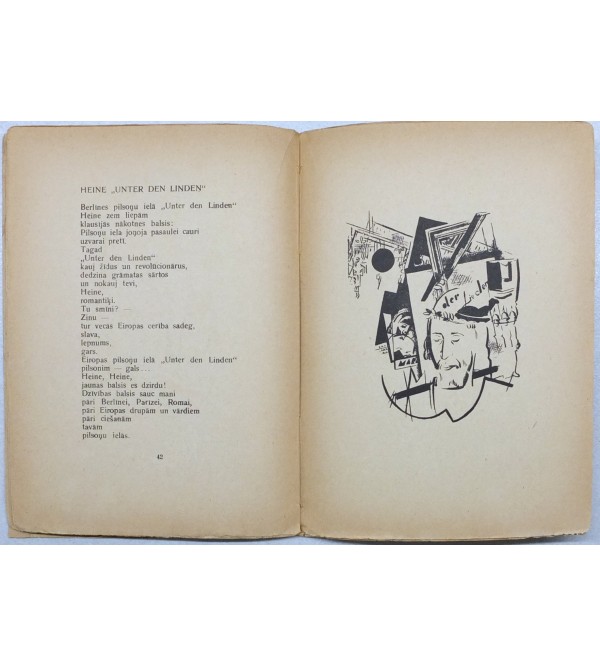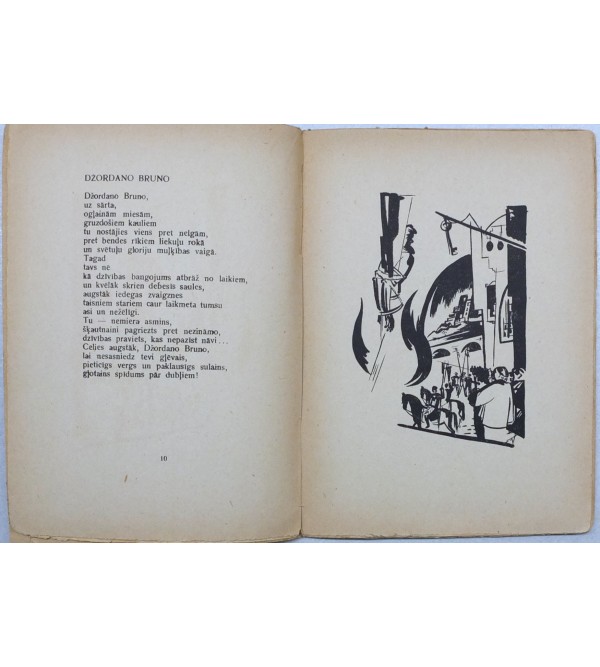Dzīvība : dzejas (The Life : poetry)
- 600€
- Product Code:89
- Availability:In Stock
Near Fine condition; cover shows slight soiling, creases across cover corners, minor chipping on the bottom outer corners of the cover, repaired spine ends; internally almost fine. Collection of poems by Andrejs Ku..
Tags: rare books, first edition books, Latvian avant-garde, constructivism, cubism, futurism, Andrejs Kurcijs, Romans Suta
Near Fine condition; cover shows slight soiling, creases across cover corners, minor chipping on the bottom outer corners of the cover, repaired spine ends; internally almost fine.
Collection of poems by Andrejs Kurcijs (1884-1959), an experimental poet and prose writer, literary and art critic, outstanding for his leftist views. He was a key member of the "Riga Activist", the most remarkable Latvian avant-garde movement of the 1920es. Kurcijs was also one of the most erudite cultural thinkers of the time, proclaimed European avant-garde trends, mainly Expressionism and Activism, authored avant-garde manifesto “Aktiva maksla” (Active Art).
“This is [collection “Dzīvība”] a love poetry. But mistakable to seek lyrical mood here, because Kurcijs is also sharp, edgy, ruthless, like in all of his recent books. There is nothing playful in his love. It is a powerful song for eternal life. [..] In the previous poetry collections Kurcijs have become proficient in cultivating love to the problems of humanity. But it is that very power of the spirit and perspicacity, that is capable to raise sexual eroticism to the higher ideals of humanism doing this so much convincingly and artistically, like Kurcijs doing in his "Dzīvība". With such self-confidence, only the poets of the ancient world revealed the flesh in ideological clarity. In his book, Kurcijs gives a synthesis that many poets have been trying to find when dealing with the topic of love.” (Grigulis, Arvīds. Andrejs Kurcijs. “Dzīvība”. Domas, 1933, No. 10, 595-596 pp.)
The book is remarkable not only for the author’s leftist poetry, but also for the masterful artist contribution. Cover design and four full-page avant-garde drawings created using indian ink techniques by Romans Suta. Here the artist used constructive compositional structures that fit well with Kurcijs’ laconic rhythm of verse. The publicist Līgotņu Jēkabs (1874–1942) wrote that the poet’s verses contained the pain of a lyrical “me” about the rebirth and restlessness, the pessimism and bitterness of humanity. Suta understood this range of emotions, providing illustrations of several of the characters from the poems so as to strengthen the ideas therein (the illustration for the poem Beating Kant, for instance, in which the lyrical “me” detests the great German philosopher, shows Kant and Kurcijs standing alongside one another).
Painter and graphic artist Romans Suta (1896–1944) was an outstanding representative of Latvian Modernism. His graphic style reached its apex during the 1930s, which is when artist produced his book illustrations. He illustrated books by Aleksandrs Čaks, Andrejs Kurcijs, Viktors Eglītis, Ālant Vilis and others. Suta had an approach toward graphic art that was unique and inimitable, with free and expressive lines that precisely depict an event or an image. He was very much inspired by ancient Chinese and Japanese masters who could use a single brushstroke to express the essence of a process; this, to the Latvian artist, was the height of Indian ink drawings. Suta’s works prove the artist’s mastery in the world of graphic art and his innate ability to turn written words into a line.
| Specification | |
| Title | Dzīvība : dzejas (The Life : poetry) |
| Author | Andrejs Kurcijs |
| Artist | Romans Suta |
| Publisher | Laikmets, Rīgā |
| Published year | 1933 |
| Country | Latvia |
| Edition | 1st edition |
| Binding | Soft cover |
| Octavo | 14 x 19 cm |
| Weight | 0.100 kg |
| No. of pages | Wrappers, 51, [1] pp |
| Language | Latvian |




